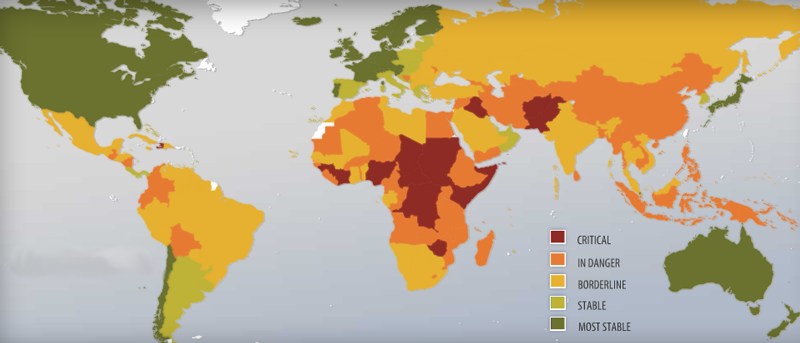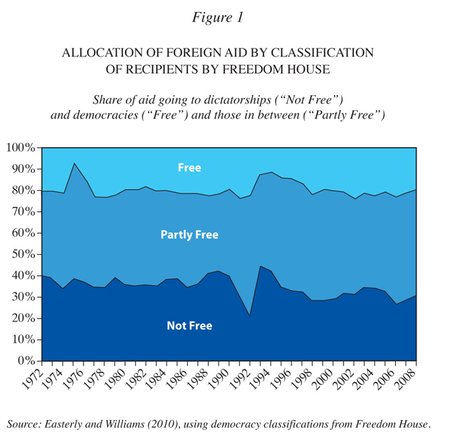Substitutability: there is no substitute for learning this wonky concept if you want your project to succeed
The debate we had on the HDI brought up the seemingly drop-dead boring jargon “substitutability.” Surprise! This actually turns out to be a USEFUL concept. Consider two extremes in an everyday example. For producing the output: “weird music that Bill listens to,” my iPod and my iPhone are perfect substitutes, so one is redundant for this purpose (forget about other purposes for now). For producing this same output, headphones and the iPod are NOT substitutes, they are BOTH required in the proportions: 1 set of headphones for every 1 iPod. So headphones and iPods have zero substitutability.
The exact opposite concept to substitutability is complementarity. Headphones and iPods are perfect complements (you can’t use one unit of either without one unit of the other). At the other extreme, iPods and iPhones have zero complementarity (you CAN use one without the other). This is just a description of technology as it is at the moment, that we might have to take as given (but maybe not, see below).
So why does this matter for, say, aid projects? Aid projects often run into trouble because one of the essential inputs (one of the “complements”) for the desired project output goes missing. So for example, the supply of clean water breaks down because one small part fails on the water pump at the well. None of the other components of the water supply are worth anything as long as the one part of the pump stays broken.
This is a common problem. Indeed, many disasters are caused by the failure of one (sometimes very small) complementary input, like the malfunctioning O-ring that caused the 1986 Challenger Shuttle explosion.{{1}}
 Yet the idea of complementary inputs over-predicts the likelihood of disaster – there are so many different parts that could fail, any one of which would be fatal, you would expect MOST Shuttles to fail. Or you would expect a lot more airline disasters than actually happen, since airplanes are subject to the same problem.
Yet the idea of complementary inputs over-predicts the likelihood of disaster – there are so many different parts that could fail, any one of which would be fatal, you would expect MOST Shuttles to fail. Or you would expect a lot more airline disasters than actually happen, since airplanes are subject to the same problem.
So why are more airplanes not falling out of the sky? Airplane designers do not passively accept perfect complements, they add many backup (redundant) systems in case one part fails. In other words, they deal with a complementary (essential) input by creating a perfect substitute for it in case it fails. I follow the same principle when I carry around both my iPod and my iPhone, to avoid the catastrophe in which the battery runs out on one and I can’t listen to my eccentric music.
The lesson for aid projects is to also build in redundancy for the essential complementary inputs. Make sure you have a good backup system of repairmen and spare parts in case the water pump breaks down. This seemingly obvious advice is often not followed–for example in Malawi, between 30 and 40 percent of all waterpoints don’t work.
Oh, and a final word on the HDI debate. Under their old method, UNDP assumed that inputs into the index (like income and life expectancy) were perfect substitutes, so the amount you have of one doesn’t affect the usefulness of the other. This means that even if, say, Zimbabwe has almost no income, it still gets some credit if life expectancy rises.
The new HDI method instead treats these inputs as complements, meaning that a missing input (or an income level very close to zero) would produce the catastrophe of zero overall human development, just as an iPhone with no headphones nets us no music at all.
In our critiques of the HDI, Martin Ravallion, Laura Freschi, and I thought this was way too extreme. People are resourceful enough to “produce” human development even if their income is extremely low, when they will find back-up substitutes for “low material income.”
An important part of development in general is developing systems that provide back-up redundancies for any essential input into production. Development is also the growth of resourcefulness to work around bottlenecks of any one particular scarce input.
And so, class, today’s lesson is: Aid project managers should imitate this resourcefulness. Whenever you get stuck by complements, look for substitutes.
[[1]]In fact, Michael Kremer used this as an analogy for development failures in his classic paper “The O-ring Theory of Economic Development”[[1]]
 From Aid to Equality
From Aid to Equality








